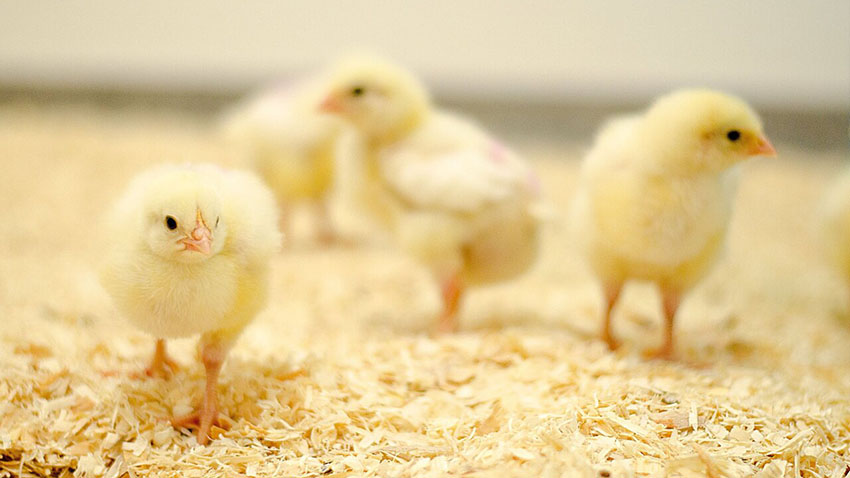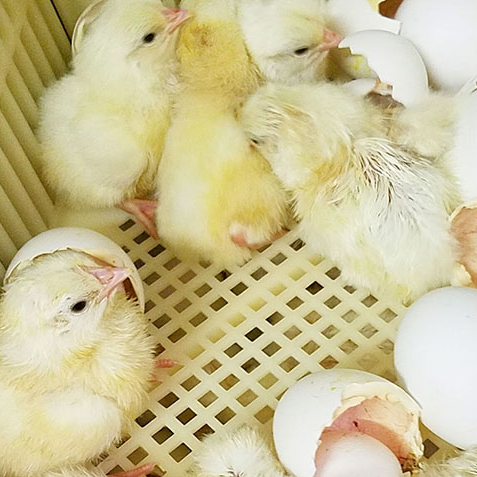For those venturing into the poultry farming business or simply starting a small backyard flock, knowing how to raise baby chicks in the initial 10 days is crucial. This period significantly impacts the chicks’ long – term health, growth, and productivity. Here, we will summarize the essential skills and practices to ensure the best start for your new – born chicks.

1. Temperature and Humidity Management
Day 1
- Temperature: Pre – warm the chick house to a temperature range of 35 – 37 °C. This high temperature is necessary as newly hatched chicks have poor thermoregulation capabilities. Their bodies are not yet fully developed to maintain a stable internal temperature, so an external warm environment is vital. For example, if the temperature is too low, chicks may huddle together, which can lead to suffocation and uneven growth.
- Humidity: Keep the humidity between 65% and 70%. A proper humidity level helps prevent the chicks from drying out. It also aids in the normal functioning of their respiratory systems. In low – humidity conditions, chicks can lose excessive moisture through their respiratory tracts, leading to dehydration.
- Lighting: Provide 24 – hour light. Chicks at this stage have poor eyesight, and continuous light helps them easily find food and water.
Day 2 – 3
- Lighting: Maintain the light time above 22 hours. The reduced light time is a gradual adjustment to help the chicks adapt to a more natural day – night cycle while still ensuring they have sufficient time to eat and move around.
- Humidity: Keep the humidity at around 70%. Consistent humidity is crucial during these early days as the chicks’ bodies are still developing, and stable environmental conditions support their growth.
Day 4 – 7
- Temperature: Lower the house temperature to 34 – 36 °C. As the chicks grow, their bodies become more capable of generating heat, so the environmental temperature can be gradually reduced. However, the temperature should be adjusted gradually to avoid stress.
- Ventilation: Start to focus on ventilation. Good ventilation is essential to remove harmful gases such as ammonia and carbon dioxide, which can build up quickly in the chick house. Ammonia, for instance, can irritate the chicks’ respiratory systems and eyes, leading to health problems.
Day 8
- Lighting: Reduce the light time to 14 hours. This further adjustment in lighting helps regulate the chicks’ biological rhythms and prepares them for a more natural light – dark cycle.
- Temperature: Maintain the house temperature at about 34 °C. By this time, the chicks should be adapting well to the gradually decreasing temperature.
Day 9 – 10
- Temperature: Keep the house temperature at 33 – 34 °C.
- Humidity: Lower the humidity to about 60%. As the chicks grow, they produce more moisture through respiration and excrement, so reducing the humidity helps prevent mold growth and respiratory problems.
2. Feeding and Watering
Day 1
- Water: Provide cold – boiled water as soon as the chicks are placed in the cage. Add 5% glucose and multivitamins to the water. Glucose provides an immediate energy source for the chicks after hatching, while multivitamins help boost their immune systems. For example, vitamin C in the multivitamins can help reduce stress in the chicks.
- Feed: Offer high – protein feed. Place the feed in troughs or trays. The crude protein content of the feed should not be less than 19.5% to support the rapid growth and development of the chicks. Feed the chicks 4 times a day, ensuring there is always water available.
Day 2 – 3
- Continue with the same feeding and watering routine: However, start to observe the chicks’ appetite and behavior. If some chicks are not eating or drinking well, they may need to be separated and monitored more closely.
Day 4 – 7
- Feeding and watering frequency: Change the frequency to 3 times a day. Provide running water for drinking, which is more hygienic. Adjust the multivitamin dose in the water according to the chicks’ health condition. For example, if the chicks seem more active and healthy, the multivitamin dose can be slightly reduced.
- Weighing: On the 7th day, randomly select 5% of the chicks and weigh them. Compare their weights with the standard weights for their age. If they are underweight, adjust the feed quantity and quality accordingly.
Day 8 – 10
- Feeding: Ensure sufficient feed is provided to meet the growing nutritional needs of the chicks. As they grow, their appetite increases, and they require more nutrients for proper development.
3. Health and Hygiene
Day 1
- Disinfection: Disinfect the chicken house at night using a disinfection immune machine. This helps kill any harmful bacteria, viruses, or fungi in the environment, reducing the risk of disease transmission to the vulnerable chicks.
- Pre – warming precautions: Ensure the ground and walls are warm to prevent chicks from getting cold. Cold stress can weaken the chicks’ immune systems, making them more susceptible to diseases.
Day 2 – 3
- Disease prevention: Use drugs or vaccines as appropriate to prevent respiratory diseases and infectious diseases in chickens. For example, some common vaccines can protect against Newcastle disease and infectious bronchitis.
Day 4 – 7
- Cleaning and disinfection: Clean the chicken manure every day and carry out disinfection work after cleaning. This reduces the build – up of harmful pathogens in the chicken house.
- Ventilation: Strengthen ventilation, especially in coal – burning heated chicken coops, to prevent gas poisoning from carbon monoxide and sulfur dioxide.
Day 8
- Debeaking: Consider debeaking the chicks to prevent feather – pecking, toe – pecking, and anal – pecking. However, this should be done carefully, following proper guidelines. For example, the position of debeaking should be one – half from the tip to the nostril for the upper beak and one – third cut for the bottom beak. After debeaking, take measures to prevent bleeding and add medicine to the drinking water to prevent wound infection.
Day 9 – 10
- Disease prevention: Use certain medications to prevent respiratory diseases. Monitor the chicks closely for any signs of illness, such as lethargy, loss of appetite, or abnormal droppings.
In conclusion, raising baby chicks in the first 10 days requires careful attention to temperature, humidity, feeding, watering, and health management. By providing a comfortable environment, proper nutrition, and good hygiene, you can help your chicks grow into healthy adult chickens, laying a solid foundation for your poultry farming venture.

